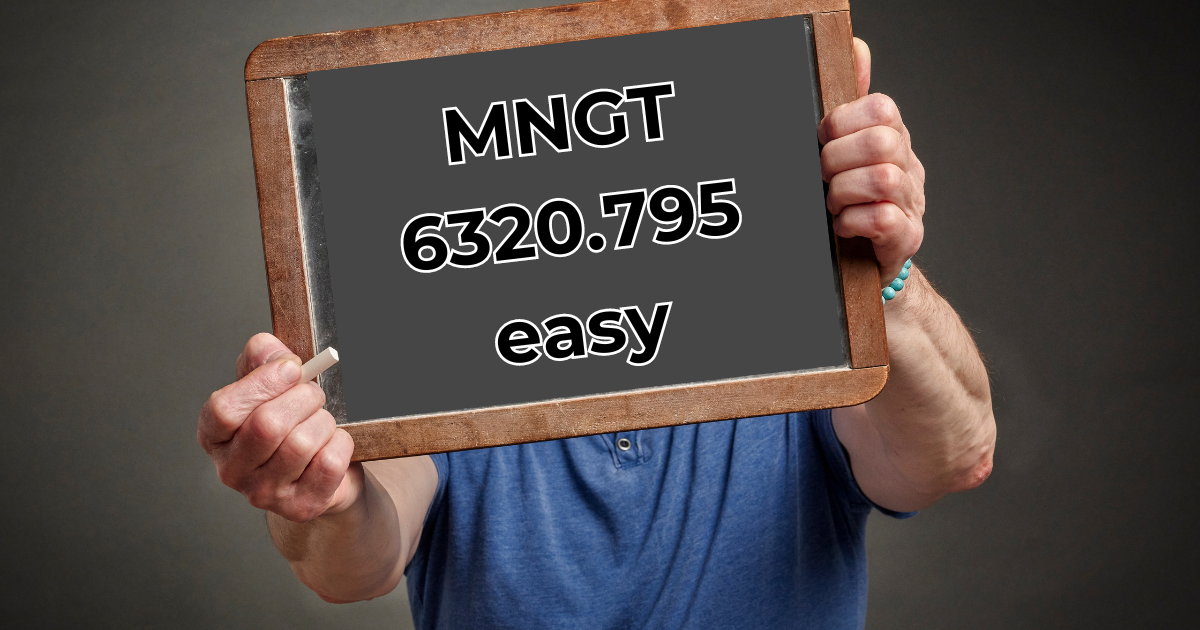Storyboarding is a fundamental aspect of visual storytelling, used across media from films to commercials and animations. One individual who has mastered this art form is Ashley Ann Tahigan, a well-regarded storyboard artist known for her unique and detailed approach. Her Ashley Ann Tahigan Storyboard Guide offers valuable insights and tips for both beginners and seasoned artists, helping them understand the intricacies of crafting visual narratives. This article provides an in-depth overview of Ashley Ann Tahigan’s storyboarding process, her techniques, and how her guide can help you enhance your skills.
Introduction to Ashley Ann Tahigan’s Storyboard Guide
Storyboarding is the process of visually organizing a film or animation into a sequence of illustrations or images. Each frame represents a scene, showing how the narrative unfolds. For artists looking to master this art, Ashley Ann Tahigan’s storyboard guide is a comprehensive resource that offers practical advice and techniques. With years of experience in the industry, Tahigan has developed a storyboard method that blends creativity with technical precision, making it accessible for artists at every level.
Her storyboard guide is designed to help creators visualize their stories, establish a narrative flow, and build a strong connection between the audience and the material. Whether you’re a beginner or an experienced artist, Tahigan’s methods focus on storytelling essentials that can elevate your work to a professional level.
Understanding the Basics of Storyboarding
What is a Storyboard?
A storyboard is a series of drawn frames that represent the shots planned for a film, animation, or any visual medium. It is the first step in transforming a script into a visual narrative, allowing directors, animators, and other team members to understand the flow of the project before the actual production starts. Storyboards break down complex scenes into manageable steps, providing a blueprint for the final product.
The Role of Storyboarding in Visual Storytelling
Storyboarding plays an essential role in creating a cohesive and compelling narrative. It serves as a visual outline of the story, offering a structured guide to how scenes should look, feel, and flow. Ashley Ann Tahigan’s guide emphasizes the importance of storytelling elements such as pacing, framing, and character expression in storyboarding. According to Tahigan, the storyboard is not just about organizing shots but about giving life to the characters and scenes, making sure the audience is emotionally engaged with the narrative.
Ashley Ann Tahigan’s Approach to Storyboarding
Ashley Ann Tahigan’s storyboarding style is known for its focus on clarity and emotion. Her guide stresses the importance of understanding the core message of a story and translating it into a series of visual scenes. She encourages artists to think about the audience’s experience and to use the storyboard as a tool to communicate the emotional beats of the narrative. Tahigan’s method is all about creating visual stories that are easy to follow and emotionally resonant.
Key Components of a Successful Storyboard
Visual Flow and Scene Progression
One of the key components of a successful storyboard is the visual flow. Ashley Ann Tahigan emphasizes the need for seamless transitions between scenes to maintain narrative coherence. Each frame in a storyboard should guide the viewer to the next, building tension, excitement, or emotion where necessary. Scene progression is about ensuring that the viewer understands what happens before, during, and after a particular moment, without losing the story’s continuity.
Action and Emotion: Capturing the Essence
Capturing both action and emotion in storyboards is another critical factor for success. Tahigan’s guide suggests focusing on key moments that highlight characters’ emotional journeys and the plot’s progression. Whether it’s a character’s reaction or a critical action sequence, the storyboard should be able to communicate these moments clearly. By emphasizing emotional and action-based beats, Tahigan’s method ensures that the storyboard not only tells a story but connects with the audience on an emotional level.
Framing and Composition Techniques
Framing and composition are vital to how a scene is perceived. Ashley Ann Tahigan’s storyboard guide includes techniques for framing scenes in a way that maximizes impact. She teaches artists to think about the rule of thirds, leading lines, and other compositional strategies that draw the audience’s eye to the focal points of the frame. Composition also involves the careful placement of characters and objects to ensure that the shot communicates the intended message effectively.
Also Read: Gomyfinance Invest
Ashley Ann Tahigan’s Storyboarding Process
Concept Development: Where It All Starts
Every storyboard begins with a concept. Ashley Ann Tahigan’s process starts by thoroughly understanding the story’s theme, characters, and key moments. Before sketching a single frame, she advises artists to spend time developing the concept to ensure it aligns with the story’s vision. This planning stage is crucial for ensuring that the storyboard captures the essence of the narrative.
Creating a Rough Sketch: Ashley Ann Tahigan’s Tips
Once the concept is clear, the next step is creating rough sketches. Ashley Ann Tahigan’s guide suggests starting with simple, loose drawings that focus on the basic composition and flow of the scenes. These rough sketches don’t need to be perfect; their purpose is to outline the action and visual structure of each frame. Tahigan encourages artists to sketch quickly, focusing on storytelling rather than details at this stage.
Refining Your Storyboard: From Rough to Polished
After the rough sketches are complete, Tahigan’s process moves on to refinement. This stage involves adding details, enhancing character expressions, and refining the composition of each frame. The goal here is to ensure that the storyboard accurately conveys the story’s tone, pacing, and emotional beats. By focusing on details during the refinement process, artists can elevate their work from rough drafts to polished storyboards ready for presentation.
Tools and Software Recommended in Ashley Ann Tahigan Storyboard Guide
Traditional vs Digital Storyboarding
In her guide, Ashley Ann Tahigan discusses the differences between traditional and digital storyboarding. While traditional storyboarding involves hand-drawing each frame on paper, digital storyboarding uses software to create more flexible and editable illustrations. Tahigan recognizes the benefits of both methods, but she emphasizes the advantages of digital tools, such as the ability to make quick edits and revisions without having to start from scratch.
Ashley Ann Tahigan’s Favorite Storyboarding Software
Tahigan recommends several industry-standard tools for digital storyboarding. Software like Toon Boom Storyboard Pro, Adobe Photoshop, and Storyboarder by Wonder Unit are some of her top choices. These programs offer a wide range of features, including timeline control, layers, and easy export options, making them ideal for professional-quality storyboards. Tahigan also highlights how these tools can help streamline the storyboarding process, allowing artists to focus more on creativity and less on technical constraints.
Key Storyboarding Techniques in Ashley Ann Tahigan’s Guide
Using Visual Symbols for Effective Communication
One of Ashley Ann Tahigan’s key techniques is the use of visual symbols to communicate complex ideas quickly. In storyboarding, visual shorthand such as arrows for movement or specific symbols for emotions can simplify communication between the artist and the production team. These symbols ensure that everyone on the team understands the intended action or emotion without the need for lengthy descriptions.
Creating Dynamic Pacing in Storyboards
Pacing is another critical aspect of effective storyboarding. Tahigan’s guide teaches artists how to manipulate pacing through the number of frames used for each scene, the timing of cuts, and the visual energy within each frame. By controlling the pace, artists can build suspense, excitement, or calm, depending on the needs of the scene. Ashley Ann Tahigan stresses that pacing should reflect the emotional tone of the story and contribute to the overall narrative flow.
The Importance of Consistency Across Frames
Consistency is essential for ensuring that a storyboard flows smoothly from one scene to the next. Ashley Ann Tahigan’s guide emphasizes maintaining a consistent style, tone, and level of detail across all frames. This consistency helps the viewer stay engaged and focused on the story, without being distracted by abrupt changes in visual style or framing.
How to Convey Emotions in Storyboards
Ashley Ann Tahigan’s Tips for Expressive Characters
Conveying emotion through character expressions is a vital skill in storyboarding. Ashley Ann Tahigan’s guide offers tips on how to draw expressive faces and body language to ensure that characters’ emotions are clear and impactful. Whether a character is happy, sad, angry, or anxious, the storyboard should visually reflect these feelings in a way that the audience can instantly understand.
Using Angles and Framing to Show Emotions
In addition to character expressions, angles and framing play a significant role in conveying emotions in a scene. Ashley Ann Tahigan advises using low angles to show power or dominance, while high angles can make a character appear vulnerable. Close-ups are perfect for intimate emotional moments, while wide shots can capture the emotional distance between characters. Tahigan’s guide highlights how these techniques can amplify the emotional impact of a storyboard.
Visual Storytelling: Ashley Ann Tahigan’s Best Practices
Developing a Clear Narrative Flow
A clear narrative flow is essential for any successful storyboard. Ashley Ann Tahigan emphasizes the importance of ensuring that each frame logically leads to the next, building the story in a way that is easy for the viewer to follow. Her guide teaches artists how to organize scenes in a way that enhances storytelling, making sure that every frame serves a purpose and contributes to the overall plot.
How to Make Storyboards Speak Without Words
One of Ashley Ann Tahigan’s signature techniques is her ability to create storyboards that communicate without relying on dialogue. Her guide encourages artists to focus on visual storytelling by using actions, expressions, and environment to tell the story. This method allows the storyboard to stand on its own, even without accompanying text or dialogue, making it more versatile and accessible to a global audience.
Scene Transitions: Techniques from Ashley Ann Tahigan
Smooth Transitions Between Shots
Scene transitions are a critical part of the storyboarding process, and Ashley Ann Tahigan’s guide covers various techniques for creating smooth and seamless transitions. Whether it’s a cut, dissolve, or wipe, the transition should match the tone and pacing of the story. Tahigan’s advice is to use transitions to maintain narrative flow, ensuring that they do not distract or confuse the audience.
Breaking Down Complex Actions Step-by-Step
For more complex actions, such as fight scenes or elaborate stunts, Tahigan recommends breaking down the movement into multiple frames. Each frame should capture a specific moment in the action, showing how the scene progresses over time. By doing this, the storyboard can convey the full scope of the action, making it easier for the production team to bring it to life.
Common Mistakes in Storyboarding and How to Avoid Them
Ashley Ann Tahigan’s Guide to Error-Free Storyboarding
Even experienced artists can make mistakes in storyboarding. According to Ashley Ann Tahigan, one of the most common mistakes is overcrowding frames with too much detail. While detail is essential, too much can overwhelm the viewer and distract from the core narrative. Her guide suggests focusing on simplicity and clarity in each frame to avoid this issue.
Overcoming Creative Block in Storyboarding
Creative block is another common challenge in storyboarding. Tahigan’s guide offers several strategies for overcoming it, including taking breaks, seeking inspiration from other media, or sketching out ideas without worrying about perfection. By staying flexible and open to new ideas, artists can push through creative blocks and continue producing high-quality work.
Advanced Storyboarding Techniques by Ashley Ann Tahigan
Creating Depth and Perspective in Storyboards
For artists looking to elevate their skills, Tahigan’s guide includes advanced techniques like creating depth and perspective in storyboards. By using techniques such as foreshortening, vanishing points, and atmospheric perspective, artists can give their storyboards a more three-dimensional and realistic feel. These advanced methods add depth to scenes, making them more immersive for the viewer.
Playing with Light and Shadow to Enhance Visuals
Light and shadow are powerful tools in storytelling, and Ashley Ann Tahigan’s guide covers how to use them effectively in storyboards. By strategically placing light sources and shadows, artists can create mood, highlight important elements, or direct the viewer’s focus. Tahigan’s techniques for manipulating light and shadow help artists add drama and emotion to their storyboards.
Importance of Collaboration in Storyboarding
Working with Writers, Directors, and Animators
Storyboarding is rarely a solo effort. Ashley Ann Tahigan emphasizes the importance of collaboration in the storyboarding process, particularly when working with writers, directors, and animators. Her guide includes tips on how to communicate effectively with these team members, ensuring that the storyboard aligns with the overall vision of the project. By fostering good collaboration, artists can create a more cohesive and polished final product.
Ashley Ann Tahigan’s Collaboration Techniques for Seamless Production
In addition to communication, Tahigan’s guide also offers practical techniques for seamless collaboration, such as sharing rough drafts early in the process and remaining open to feedback. She suggests using collaborative tools like Google Drive or Frame.io to share storyboards and receive input from team members. This approach helps streamline the production process and ensures that everyone is on the same page.
How to Create a Storyboard for Different Media
Storyboarding for Film and TV
Ashley Ann Tahigan’s guide covers how to adapt storyboards for different media. For film and television, the focus is often on pacing and framing to capture the right emotion and action. Tahigan’s techniques for creating cinematic storyboards emphasize the use of wide shots, close-ups, and medium shots to tell the story visually. By understanding the conventions of film and TV, artists can craft storyboards that are ready for production.
Storyboarding for Animation
Storyboarding for animation requires a slightly different approach, as it often involves more exaggerated actions and expressions. Tahigan’s guide includes tips on how to storyboard for animated projects, including how to plan for movement, timing, and special effects. In animation, storyboards serve as a critical reference for animators, so they must be clear and detailed.
Storyboarding for Advertising and Commercials
When storyboarding for commercials and advertisements, the focus is usually on delivering a clear message in a short amount of time. Tahigan’s guide includes strategies for creating concise and impactful storyboards that capture the essence of the product or brand. By focusing on clarity and simplicity, artists can create storyboards that communicate the client’s message effectively.
Ashley Ann Tahigan’s Guide to Time Management in Storyboarding
Breaking Down Deadlines and Workflows
Time management is a crucial skill for storyboard artists, especially when working on tight deadlines. The Ashley Ann Tahigan Storyboard Guide offers practical advice on how to break down deadlines and manage workflows efficiently. By dividing the storyboard process into smaller tasks, such as rough sketches, revisions, and final drafts, artists can stay organized and meet their deadlines without feeling overwhelmed.
Maximizing Efficiency Without Compromising Quality
In addition to managing deadlines, Tahigan’s guide also focuses on maximizing efficiency without compromising quality. She advises artists to prioritize key scenes and focus their efforts on moments that are critical to the story. By being strategic about where to spend time and effort, artists can create high-quality storyboards without sacrificing speed or productivity.
Case Studies: Projects Storyboarded by Ashley Ann Tahigan
Examining Her Work on Notable Projects
Ashley Ann Tahigan has worked on a variety of high-profile projects, including films, television shows, and commercials. In her guide, she shares case studies from some of these projects, offering insights into her storyboarding process. By examining her work, artists can learn how Tahigan approaches different types of projects and how she adapts her techniques to suit the needs of each production.
Key Lessons from Ashley Ann Tahigan’s Career
Through her case studies, Tahigan also shares key lessons she has learned throughout her career. These lessons include the importance of flexibility, collaboration, and continuous learning. By applying these lessons, aspiring storyboard artists can improve their skills and succeed in the competitive world of visual storytelling.
Common Questions about Storyboarding Answered by Ashley Ann Tahigan
FAQs from Beginners
In her guide, Ashley Ann Tahigan answers some of the most common questions from beginners, such as how to start a storyboard, what tools to use, and how to overcome creative block. Her advice is practical and easy to follow, making it accessible for artists who are just starting their storyboarding journey.
Pro Tips for Intermediate Storyboard Artists
For more experienced artists, Tahigan offers pro tips on how to refine their skills and take their storyboarding to the next level. These tips include advanced techniques for composition, pacing, and emotional storytelling, as well as advice on how to present storyboards to clients and directors.
Ashley Ann Tahigan’s Inspirational Tips for Aspiring Storyboard Artists
How to Stay Inspired in a Fast-Paced Industry
The world of storyboarding can be fast-paced and demanding, but Ashley Ann Tahigan’s guide includes tips on how to stay inspired and motivated. She encourages artists to find inspiration in everyday life, whether through movies, books, or personal experiences. By staying curious and open to new ideas, artists can keep their work fresh and exciting.
Ashley Ann Tahigan’s Advice on Developing Your Unique Style
One of the key messages in Tahigan’s guide is the importance of developing a unique style. While it’s important to learn from others, she advises artists to experiment with different techniques and approaches until they find their own voice. By developing a signature style, artists can stand out in the competitive world of storyboarding.
How to Present Your Storyboards: Ashley Ann Tahigan’s Tips
Presenting to Clients and Teams
Presenting storyboards to clients and production teams is an essential skill for storyboard artists. Ashley Ann Tahigan’s guide offers tips on how to present storyboards effectively, including how to explain the visual flow, action, and emotion in each scene. By clearly communicating the vision behind the storyboard, artists can ensure that their work is well-received.
How to Pitch Your Storyboards Effectively
In addition to presenting, pitching is another important aspect of the storyboarding process. The Ashley Ann Tahigan Storyboard Guide includes strategies for pitching storyboards to clients, directors, and producers. By focusing on the story’s emotional beats and visual impact, artists can make a compelling case for their storyboard and win over decision-makers, following the techniques outlined in the Ashley Ann Tahigan Storyboard Guide.
Ashley Ann Tahigan’s Influence on Modern Storyboarding Techniques
How Her Approach is Shaping the Future of Storyboarding
Ashley Ann Tahigan’s innovative approach to storyboarding has had a significant influence on modern techniques. Her emphasis on emotional storytelling, visual clarity, and collaboration has helped shape how storyboard artists approach their work. As more artists adopt her methods, the future of storyboarding is likely to become even more dynamic and expressive.
Innovations and Trends Inspired by Ashley Ann Tahigan
Tahigan’s work has also inspired new trends in storyboarding, including the use of digital tools and the integration of more detailed emotional beats into storyboards. Her focus on combining traditional techniques with modern technology has made storyboarding more accessible and versatile, paving the way for future innovations in the field.
Conclusion
Ashley Ann Tahigan’s storyboard guide is an invaluable resource for both aspiring and experienced storyboard artists. By offering a comprehensive overview of the storyboarding process, from concept development to advanced techniques, her guide provides artists with the tools they need to create compelling visual narratives. Whether you’re working on a film, animation, or commercial, Ashley Ann Tahigan Storyboard Guide can help you bring your story to life with clarity, emotion, and creativity.










